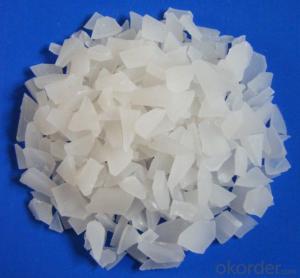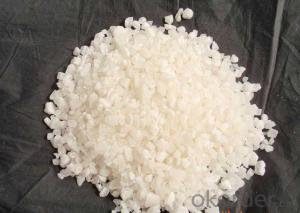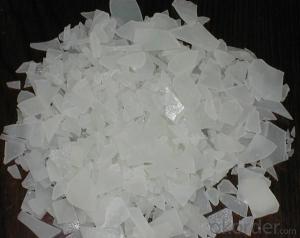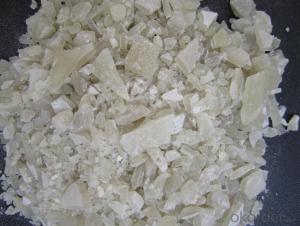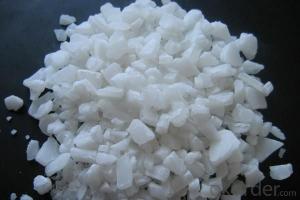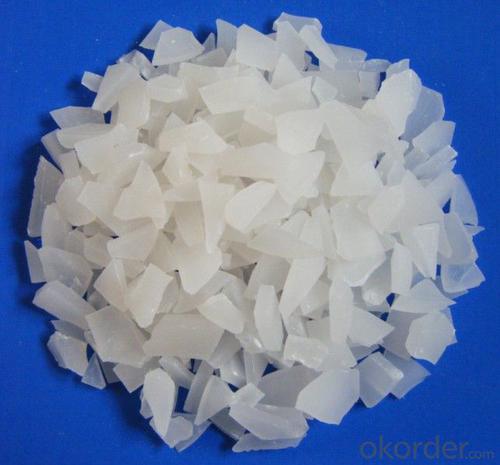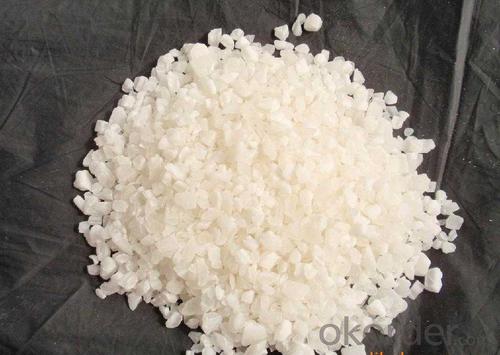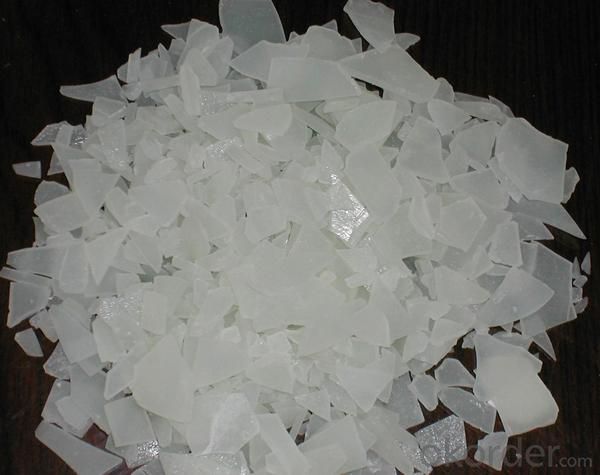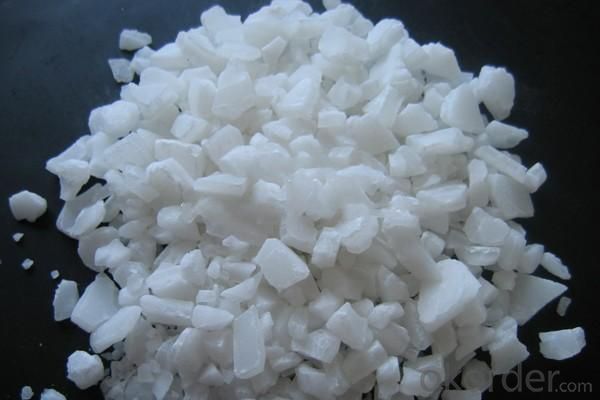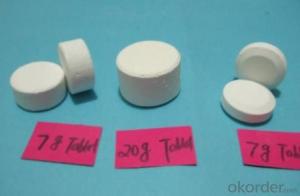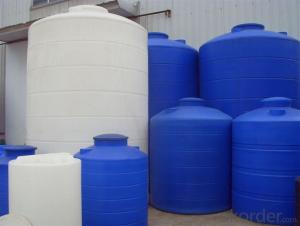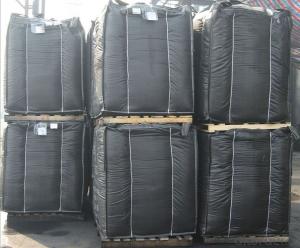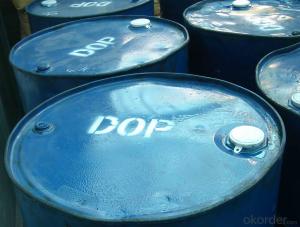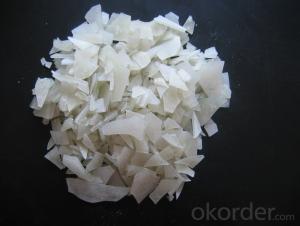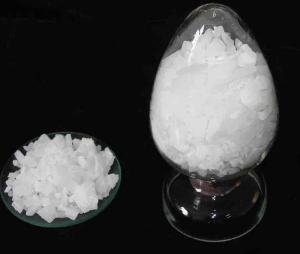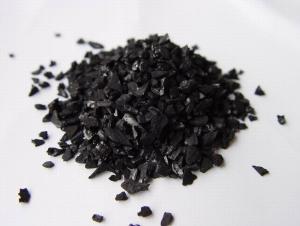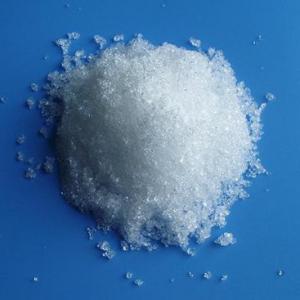Aluminum Sulfate No Fe First Grade With Best Price
- Loading Port:
- Qingdao
- Payment Terms:
- TT OR LC
- Min Order Qty:
- 25 m.t.
- Supply Capability:
- 12000 m.t./month
OKorder Service Pledge
OKorder Financial Service
You Might Also Like
1. Chemical and Physical Properties:
Product name: Aluminium Sulphate or Aluminum Sulfate
Shape: Flakes or Granular or Powder.
EINECS NO.:233-135-0
CAS No.: 10043-01-3
HS.Code: 28332200
Molecular Formula: Al2(SO4)3
Appearance:It is white or grey flake,particle or massive crystallization.
Apt to cake after moisture absorption when laid in air for a long time.A little green because of Fe2+ ,yellow when Fe2+ is oxided to Fe3+.Soluble in water easily,and water solution is acid.
2. Specification:
Standard: HG/T 2225-2001 and HG/T 2227-2004
Items | Specifications | |||
I Type:Low Ferrous/Low Iron | II Type:Non-Ferrous/Iron-free | |||
First Class | Qualified | First Class | Qualified | |
Al2O3 % ≥ | 15.8 | 15.6 | 17 | 16 |
Ferrous(Fe )% ≤ | 0.5 | 0.7 | 0.005 | 0.01 |
Water Insolube % ≤ | 0.1 | 0.15 | 0.1 | 0.15 |
PH (1% aqueous solution) ≥ | 3.0 | 3.0 | 3.0 | 3.0 |
Arsenic(As) %≤ | 0.0005 | 0.0005 | ||
Heavy metal (Pb) %≤ | 0.002 | 0.002 | ||
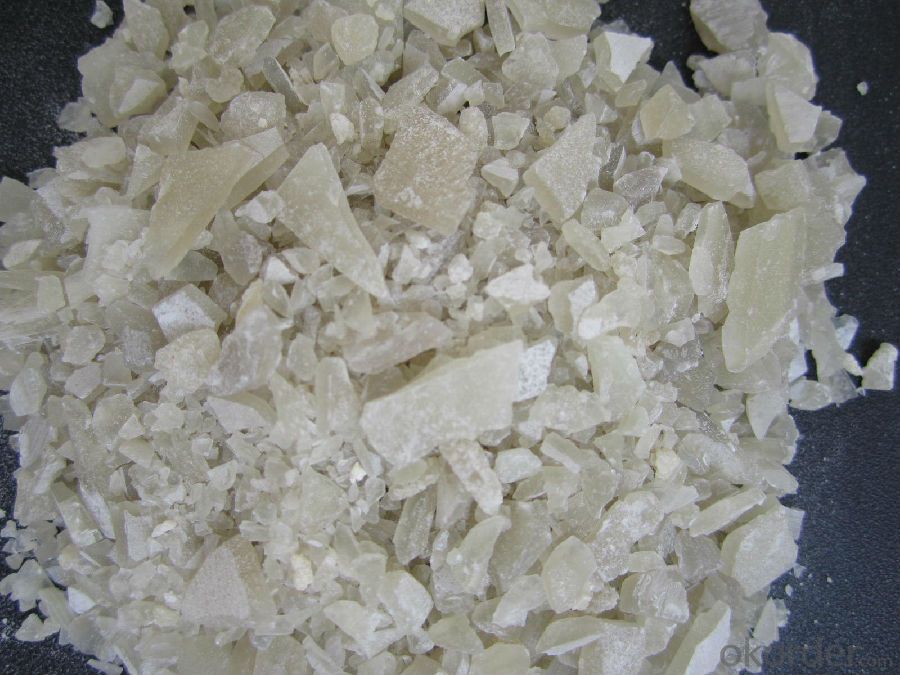
3.Applications:
Water effluent treatment system
It's used for purification of drinking water and wastewater treatment by settling of impurities by
means of precipitation and flocculation.
Paper Industry
It helps in sizing of paper at neutral and alkaline pH, thus improving paper quality (reducing spots
and holes and improving sheet formation and strength) and sizing efficiency.
Textile Industry
It is used for color fixing in Naphthol based dyes for cotton fabric.
Other Uses
Leather tanning, lubricating compositions, fire retardants; decolorizing agent in petroleum, deodorizer; food additive; firming agent; dyeing mordant; foaming agent in firefighting foams; fireproofing cloth; catalyst; pH control; waterproofing concrete; aluminum compounds, zeolites etc.
4. Package:
Packaging Detail: PP/PE 50kg/bag;25kg/bag;Jumbo bag or according to customers' requirements.
20-25MT will be loaded in per 20'FCL container.
5. Attention and Storage:
The product is liable to absorb moisture and clot due to long-term exposure, so shady, cool and ventilated environment is needed.
- Q: Does the catalyst affect the chemical reaction rate constant? How does the chemical reaction rate constant change when a positive catalyst is added to a reaction?
- The positive catalyst will increase the constant, negat
- Q: No one knows the expression of the catalyst and the chemical expression of the acridine
- If it is potassium permanganate oxygen, the catalyst is only manganese dioxide, so write on the horizontal line MnO2
- Q: What is the principle of catalyst reaction rate in chemical reactions?
- Whether the chemical reaction can be carried out according to the change of free energy, but only according to the change of free energy can not determine whether the reaction can be completed, because the chemical reaction is also completed by the reaction of the energy barrier, that is, if the reaction energy barrier is high, To provide some energy, across the barrier, to complete the reaction. The energy barrier is called activation energy. And the role of the catalyst is to reduce the activation energy, so that in a relatively harsh environment, chemical reaction occurs.
- Q: What are the chemical reaction conditions in organic chemistry are catalyst and heating, please elaborate
- This really does not have omnipotent law, their own more than one point, you can classify to remember, when I was in high school is in accordance with the notes, such as poly, polycondensation and the like. In general, the double triple bond addition, plus halogen is not the conditions, plus HCl, HBr and the like to heat; dehydration reaction generally concentrated H2SO4 heating, dehydration condensation is also; there are some special, such as ethylene added to ethanol Special temperature requirements, it seems that 120 degrees, there are other; other addition poly, polycondensation some need catalyst. The The In short, the conditions are many, in general, you do not go to the high school to do more questions after the feeling, encounter problems do not panic general experience can come out according to experience, this also depends on the usual accumulation, if the equation conditions Wrong to deduct points, it is not worthwhile. There are some questions when the examination will give you some information, whether you know do not know should see clearly, although some of the reaction but the subject to the conditions are not the same, when you do according to the title to write conditions, this will not wrong. In addition, thank you for your help, I do not seem to know you
- Q: What is the difference between biological enzymes and chemical catalysts?
- Chemical catalysts are widely used, generally the majority of transition elements
- Q: explain how a catalyst can affect the rate of reaction but not be in the overall equation.?
- Simply, the catalyst provides a better way for the reaction to occur (some won't work without the catalyst) and usually a favorable reaction will run faster if there is a catalyst. There are many ways for this to happen. The catalyst can provide more surface area for a reaction to occur, it can do an adsorption process where one of the reactants sticks to the surface and exposes a portion of the molecule which is more favorable to the reaction. It can lower the energy required for the reaction to occur (same effect as increasing temperature) by favoring an intermediate step in the reaction. Lots of different ways, some not fuly identified or understood. The catalyst people who work with the platinum metals groups are notorious for keeping their mixtures secret. A better gasoline catalyst for refineries is worth billions in profits. It is not considered in the equation because you get back what you start with even if one of the intermediate steps involves changing the chemical composition of the catalyst and then has it returning to its original state with the formation of the product.
- Q: Where are they good catalysts and why?? THanks!
- A catalyst is a substance that speeds up a chemical reaction by providing an alternate reaction pathway with a lower activation energy. Catalysts appear not to take part in the reaction. Frequently, catalysts are not very reactive. Acids and bases, on the other hand, are very reactive. Acids (as H+) and bases ( as OH-) sometimes function as catalysts in some organic reactions. They appear to be catalysts because in the course of the mechanism H+ or OH- is regenerated.
- Q: Is it not the rate to accelerate the addition of the catalyst to the catalyst, and that is why the balance does not move
- If the reaction before the catalyst, you can speed up the reaction rate, that is to achieve the balance required to reduce the time, but to balance the system when the same concentration
- Q: woulld you be able to answer these aswell i really dont know how to do this cehmestryExplain how, and why, an atom of chlorine (Cl) and an atom of lithium (Li) would form a chemical bond with each other. (iii)Explain what is meant by electronegativity and how it can be used to determine the nature of a chemical bond. (iv)Write a note outlining what is meant by vapor pressure and explain how the concept is used to define the boiling point of a liquid.
- Because of the production of photochemical oxidants from NOx reacting with hydrocarbons in sunlight Noxer blocks are used to rid the NOx from the surroundings through The titanium dioxide (TiO2) on the bocks absorbs ultra-pink radiation from daylight which excites its electrons to a bigger orbital. On the outside of the crystals of TiO2 a reaction happens between oxygen and a high power electron from the TiO2. O2 + e? --O2 ? The excessive vigor electron is then given back to the TiO2 when water then reacts with the oxygen to present H2 O + O2 --H+ + O2 ? + OH Nitrogen dioxide is oxidised to nitrate ions as a result of the hydroxyl radical being an awfully strong oxidising agent NO2 + OH --H+ + NO3 ? The superoxide from response 3 also varieties nitrate ions from nitrogen monoxide. NO + O2 ? --NO3 ? This nitrate is washed away through rain or combines with the concrete within the block.
- Q: The catalyst can change the chemical reaction process, why is it wrong?
- No, only for the length of time
Send your message to us
Aluminum Sulfate No Fe First Grade With Best Price
- Loading Port:
- Qingdao
- Payment Terms:
- TT OR LC
- Min Order Qty:
- 25 m.t.
- Supply Capability:
- 12000 m.t./month
OKorder Service Pledge
OKorder Financial Service
Similar products
Hot products
Hot Searches
Related keywords
